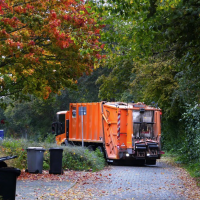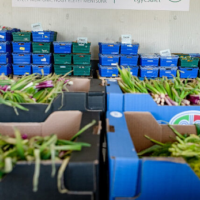Beyond Wall Street: the encouraging growth of new financial models
Ez is érdekelhet

The term circular economy may be new to finance, but the concept is not. The circular economy has caught on in large part because of the need to eliminate waste, where the breakdown of one system leads to the creation of another.
Hazel Henderson, futurist, economist and president and founder of Ethical Markets Media, has been chronicling emerging systems of consensual decision-making, stakeholder feedback, collaborative consumption and co-operatives bypassing Wall Street for years. Finance has fed circular economies for decades through public banking, local currencies and microfinance schemes, with newer forms of funding including crowdfunding and green bonds.
Public banking
Public banks – those operated in the public interest at local and national levels – demonstrate an important principle of the circular economy. Public banking eschews short-term profit in favour of long-term prosperity, making and returning profits to a general fund for public good rather than moving wealth outside the public system.
Research conducted by Ellen Brown, author of The Public Bank Solution, shows how public banking systems are responsive to local needs, reduce interest rate costs of infrastructure projects and reduce taxes, while increasing the financial stability of the community served. Revenue circulates within the local, state or national economy, rather than being concentrated among the shareholders of a private entity. While the Bank of North Dakota is the only public bank in the US today, public banking has been around for centuries and models that can be replicated exist all around the world. In Costa Rica, public banking was instituted in 1949 and represents 80% of all retail deposits. These natural systems are stable: in Costa Rica, none of the four public banks have failed in three decades.
Currencies
A circular economy promotes the enhanced flow of goods and services, as do local currencies. Examples include specific currencies such as BerkShares in the US, and the Bristol pound in the UK. A local currency is used within a defined area and promotes demand for local goods and services. A multiplier effect occurs as the service or goods provider in turn spends the funds locally, with each reuse strengthening the system, promoting local value, self-sufficiency and community interdependence, while providing independence from financial systems far from local control and benefit.
Increasing local spending also benefits the economy in more tangible ways by reducing transportation costs and carbon emissions (using local transportation, agriculture and manufactured goods), for example. The use of local currencies increases in times of recession or depression as we saw internationally after the banking crisis of 2008. Local currencies exist around the world in many different forms, with the common denominator being the intent to strengthen the local system, building in resilience, minimising waste and enhancing rather than diluting local productivity.
Microfinance
Traditional microfinance has long cycled goods, services and revenue within a community. Microfinance also maximises human capital, often overlooked in favour of financial or manufactured capital in discussions about the economy. Microfinance, public banking and local currencies all respond to local needs and rely heavily on personal interaction. Participants help and mentor each other, monitor each other and trade goods and services for which they see a need. Kiva, Women’s World Banking, BRAC and the Grameen Foundation are just a few of the microfinance resources that work to fight poverty, not just increase income.
Women’s World Banking goes beyond financing projects to address education, resource and training needs within cultural contexts. Many microfinance organisational goals are regenerative and restorative, reaching under-served populations and improving the environment, which are important principles of the circular economy as defined by the Ellen MacArthur Foundation, pioneers in researching and promoting the circular economy.
Green bonds
While circular finance has long been modelled in local economies, the concept is now being applied more broadly. As the Green Transition Scoreboard, Green Bonds Growing Green Infrastructure (pdf) highlights, bond offerings specifically labelled “green” grew by 80% in 2013 and 2014.
The 2014 annual Bonds and Climate Change report (pdf), prepared by the Climate Bonds Initiative and commissioned by HSBC, reports $503bn (£333bn) now invested in bonds covering renewable energy, transport, waste and pollution control, water, buildings, industry, agriculture, forests and climate finance.
Meanwhile, Bloomberg’s Green Bonds Market Outlook (pdf) details bonds at the international level (World Bank, European Investment Bank and African Development Bank); national and municipal levels; corporate “self-labelled” bonds; green asset-backed securities and project bonds for infrastructure.
Crowdfunding
Even more recent to the circular economy finance scene is crowdfunding: using electronic platforms to allow individuals to directly invest their values and vision without the involvement of Wall Street. Since the American Jobs Act was passed in 2012 crowdfunding has grown in popularity, morphing from homegrown Indiegogo and Kickstarter models to financing industry-specific multi-million dollar deals, as Mosaic does for solar. Focusing on human capital within the circular economy, in October 2014, Crowdfund Capital Advisors and the Crowdfunding Centre published the Jobs Impact Small Business Crowdfunding Index, showing almost 40,000 new jobs in the US as a result of crowdfunding.
As Hazel Henderson puts it: “Local currencies and microcredit have flourished worldwide for decades. Whenever mainstream economic policies and finance failed to serve real local economies, circular economy solutions appear.” Local economies are by nature circular economies, with a plethora of established and emerging financial vehicles available to move the funds necessary for a robust system. Towards the end of 2014, green bonds were near reaching $40bn (£27bn) for just that year. There can be little doubt finance in the circular economy is ready for 2015.
Source: The Guardian







